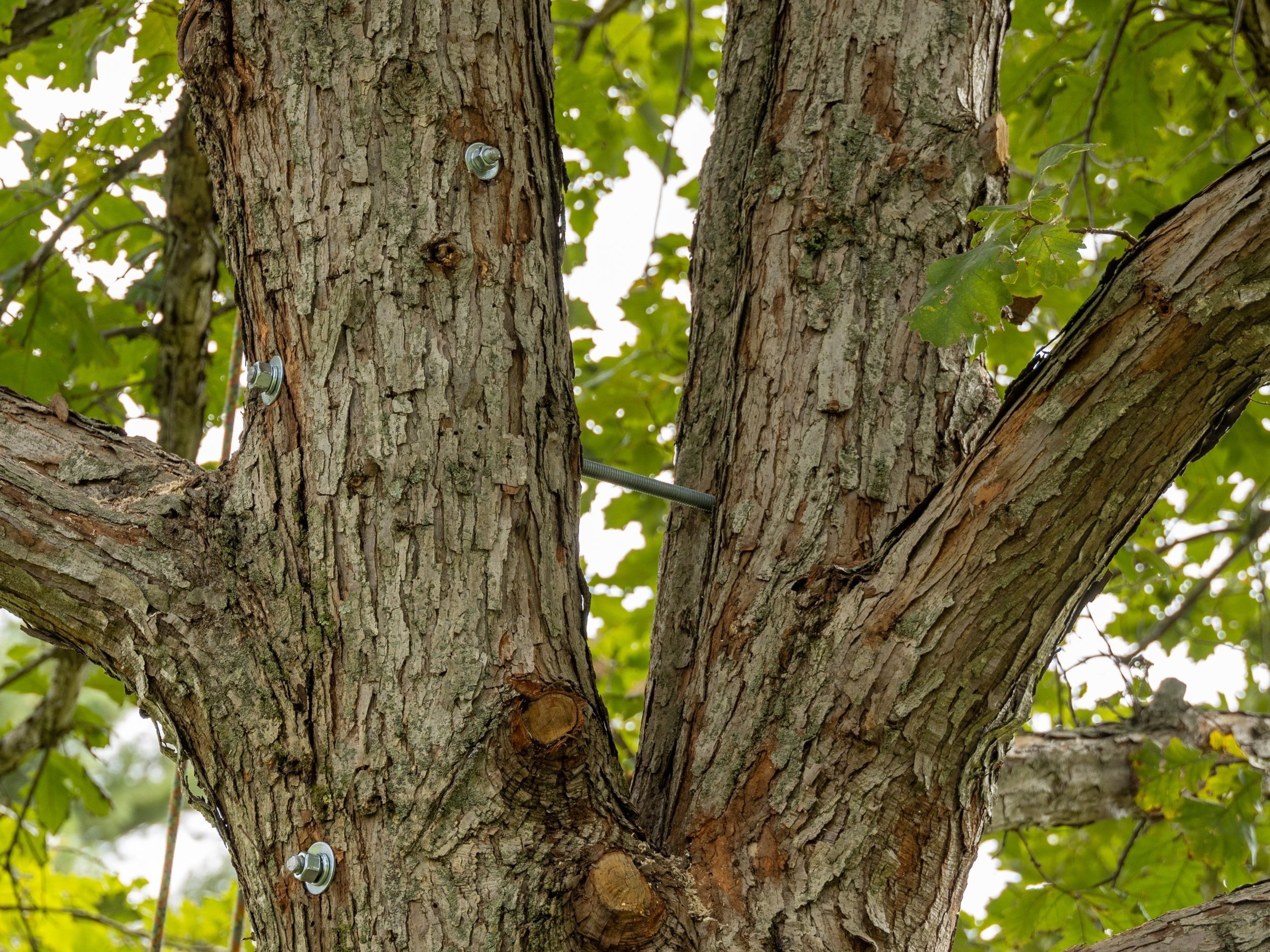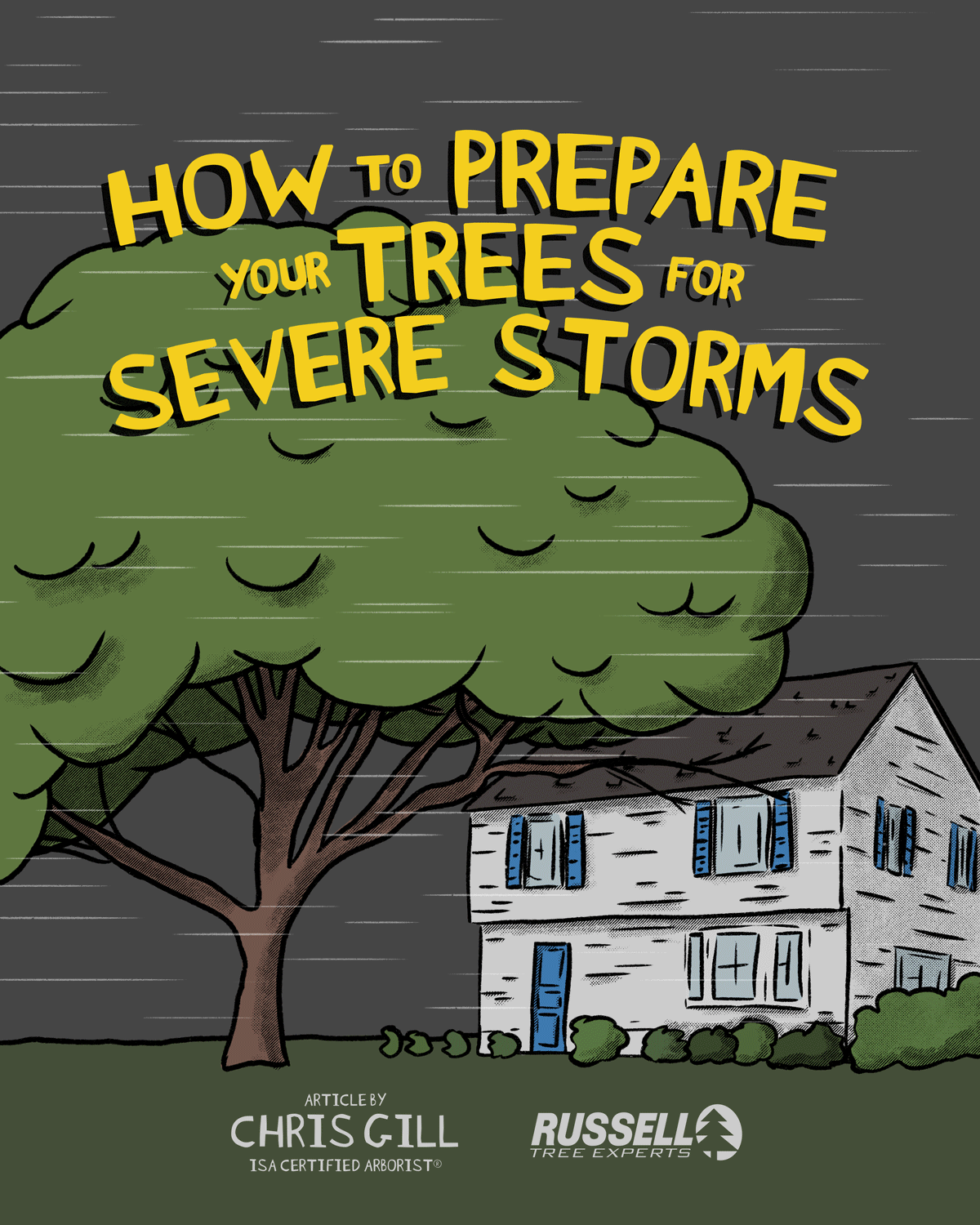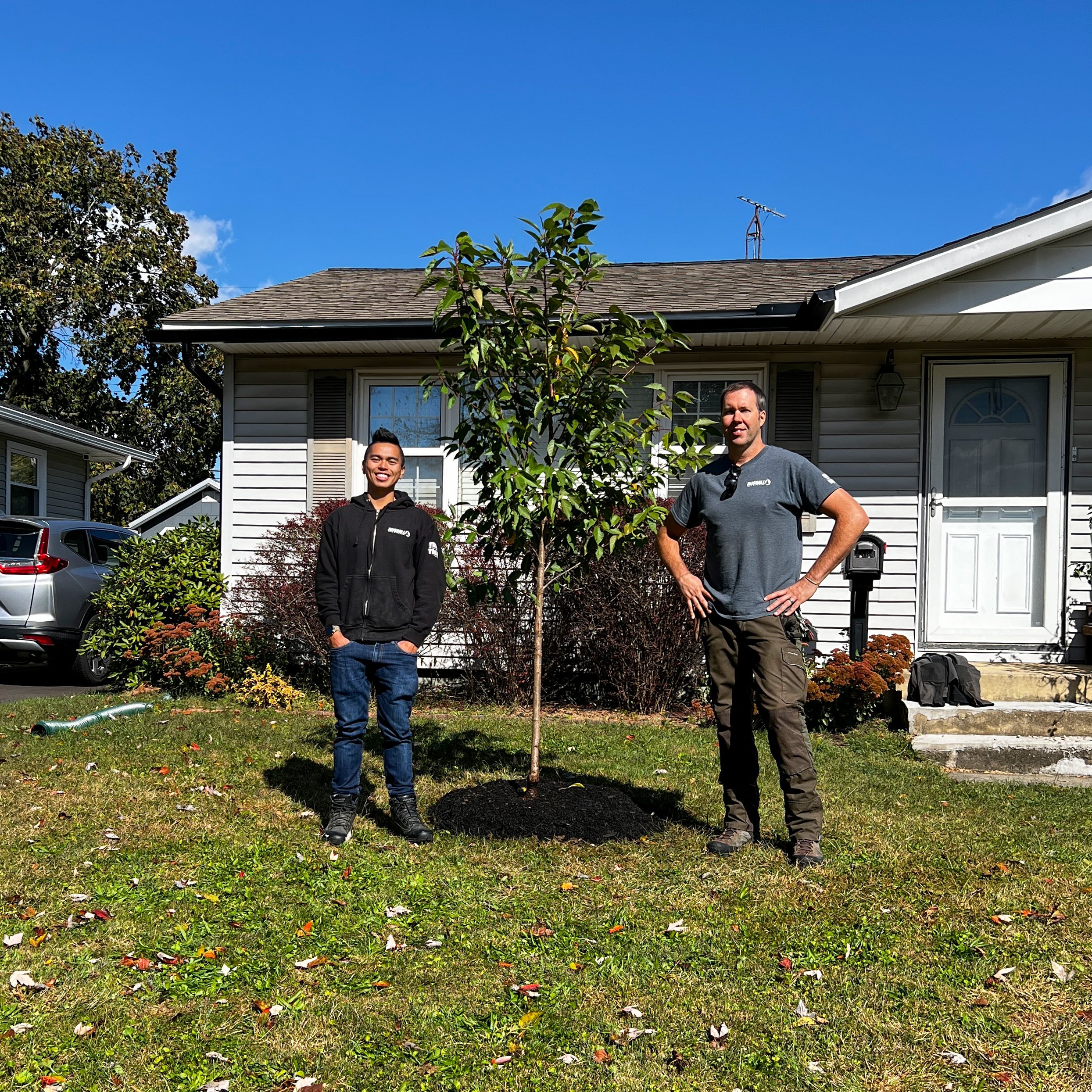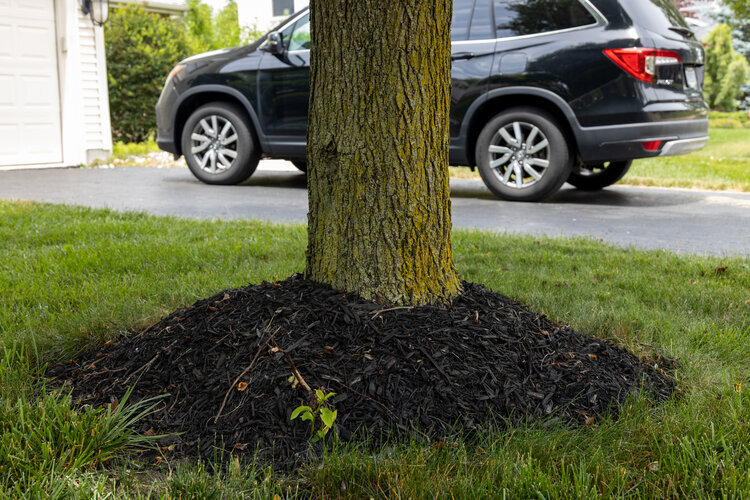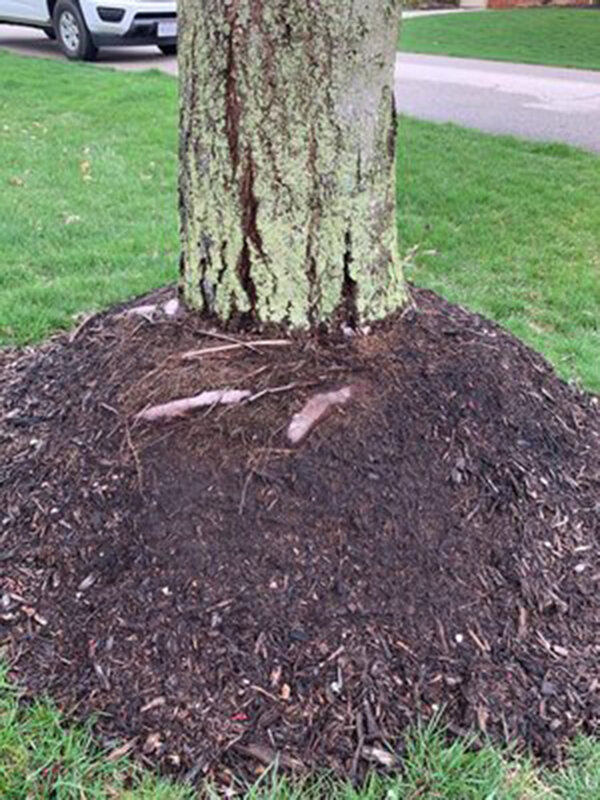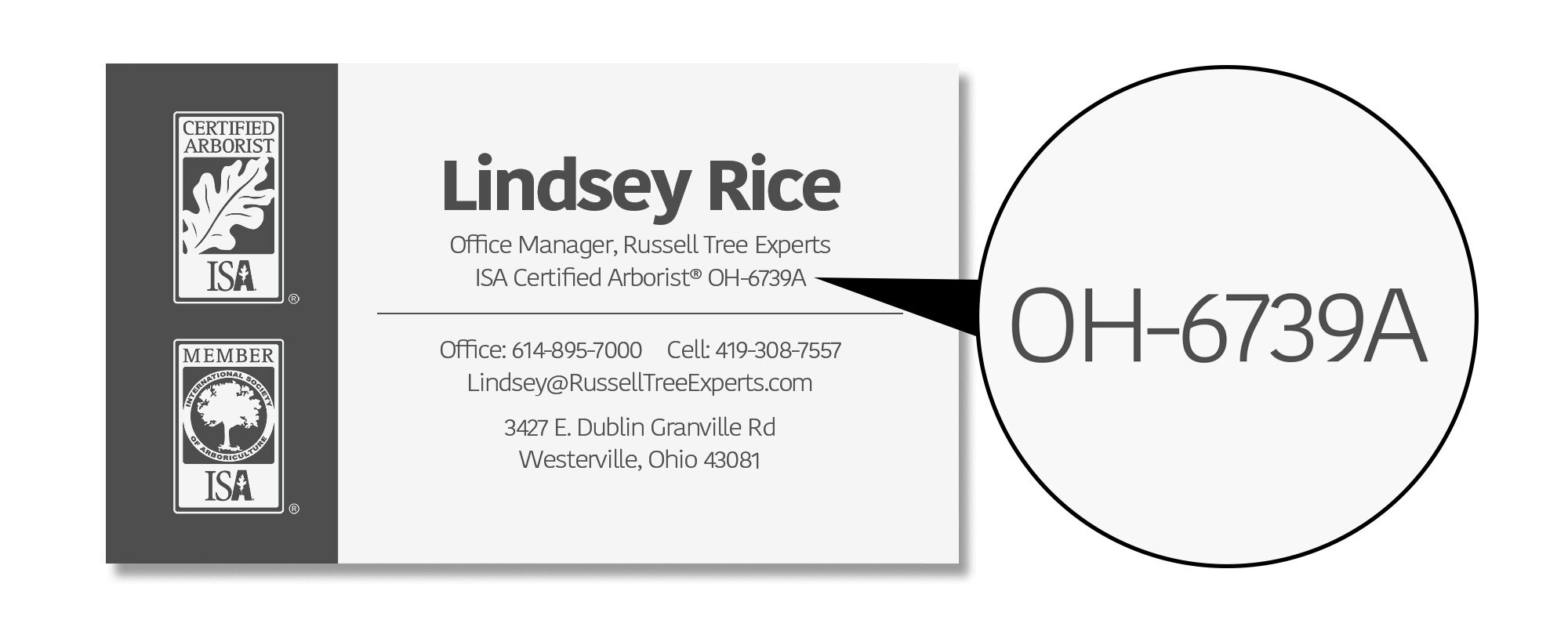By Krista Harris
ISA Certified Arborist® OH-6699A
February 20, 2025
English ivy climbing the trunks of your trees can look so natural and attractive in the landscape. It is a lovely and effortless groundcover with glossy, emerald, evergreen foliage. However, English ivy is also a non-native species in the US and will clamber defiantly into your tree’s canopy, threatening the tree’s ultimate survival. You may be tempted, as I have been, to allow this beautiful European invader to engulf the scaffold limbs of your defenseless trees, but please do not be misled by this aggressive charmer. English ivy seeks to deprive your trees of water and nutrients at first, and over time, envelop the tree’s crown and hinder its ability to create food for itself through photosynthesis. The tree is ultimately outcompeted by the vine and slowly declines, while the ivy thrives on its new framework, acquiring all the water, soil nutrients and sunlight for itself.
English ivy can be a very heavy burden for your tree to bear. It can ascend 100’ and achieve 12” diameter stems. The sheer weight can weaken limb attachments, causing failure of limbs or entire trees, especially in wind or snow events. Vigorous vines can block natural air and sun penetration to the bark and encourage pest and disease development. When bark is thickly concealed by vines, tree decay and diseases are also very difficult to observe and can go unnoticed.
If you have unwittingly endangered your trees by allowing English ivy to establish itself on their bark, take action now to exterminate this clingy aggressor. The vines should be cut at the base of the tree, removing a 2-3” section from each stem. Repeat this process at 4-5’ up the trunk. Carefully spraying or painting the section still attached to the roots with herbicide will help ensure the ivy does not regrow. Maintaining all English ivy 3-4’ away from the trunk is also a great habit. Do not attempt to remove the severed vines from the tree’s bark. This very grippy greenery is firmly attached using modified stem roots called “hold fasts” and removing the vine will remove the tree bark as well. The remaining, now dead, vines can be safely removed without causing damage to the bark in 2-3 years, if you find them unsightly.
4 weeks after Russell Tree Experts abated the English ivy on a large American sycamore specimen
For a free tree quote from one of our 20+ ISA Certified Arborists®, please give our local office staff a call at (614) 895-7000 or visit RussellTreeExperts.com/Quote! One of our skilled arborists can tackle this important, tree life-saving task or any other tree care needs! Your trees will express their gratitude with many more years of healthy, unrestricted growth!
[Please note: This article was revised and republished on 2/20/25 from its original publish date of 3/10/23]
ADDITIONAL ARBOR ED ARTICLES!
Krista Harris | Journeyperson, Russell Tree Experts
Krista grew up in the central Ohio area and became an ISA Certified Arborist® in 2017. She graduated from The Ohio State University with a Bachelor of Science in Crop Science and a minor in Plant Pathology in 2000 and has been in the green industry ever since. Her favorite trees are the American sycamore, American beech, and giant sequoia. [BS in Horticulture Crop Science, The Ohio State University / ISA Certified Arborist® OH-6699A / ODA Comm. Pesticide Lic. #148078]















